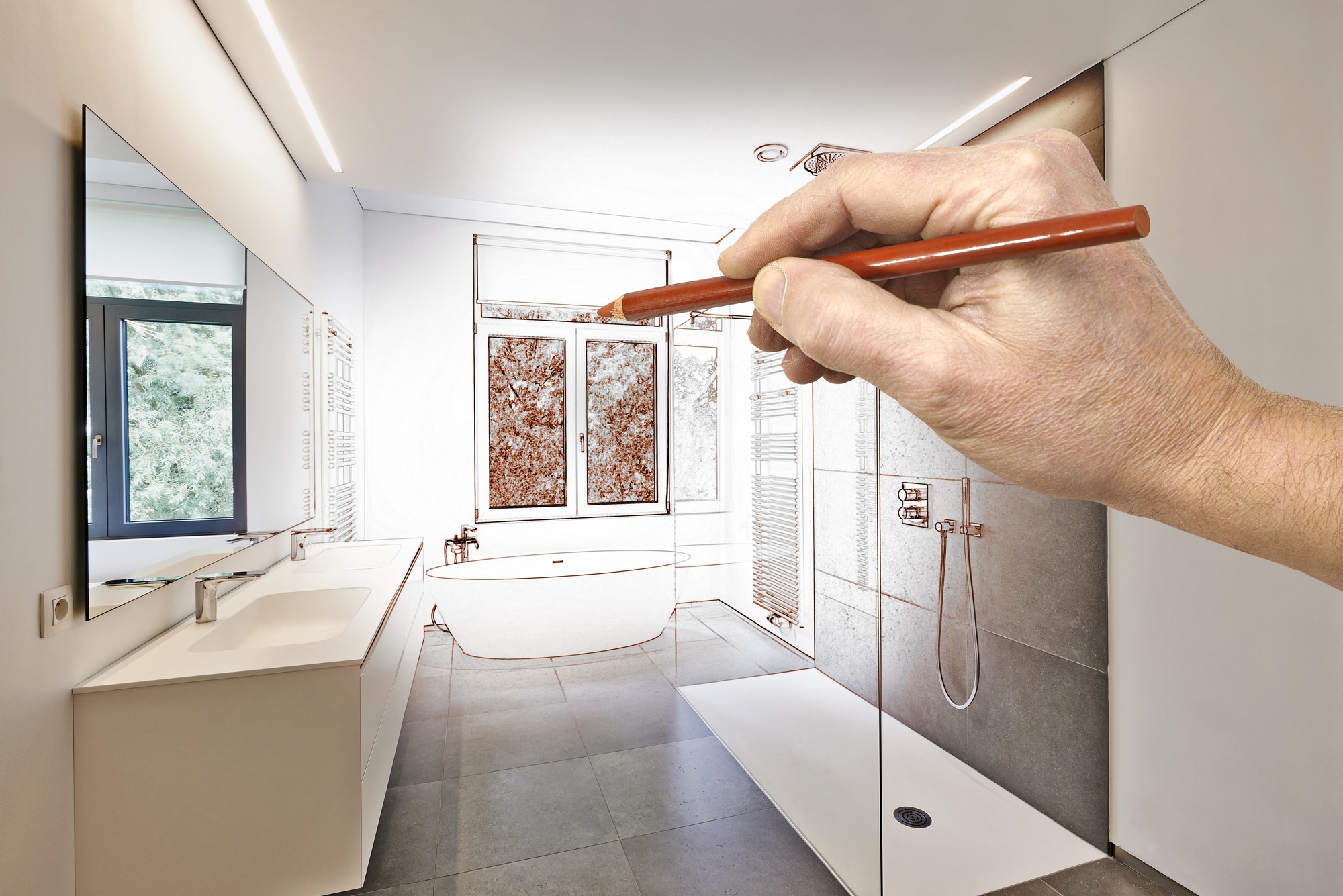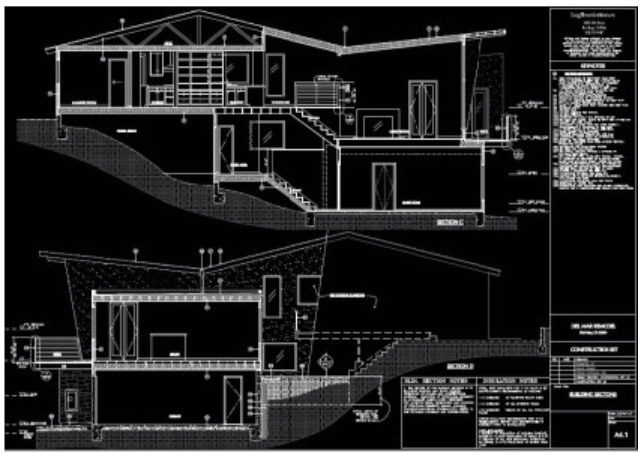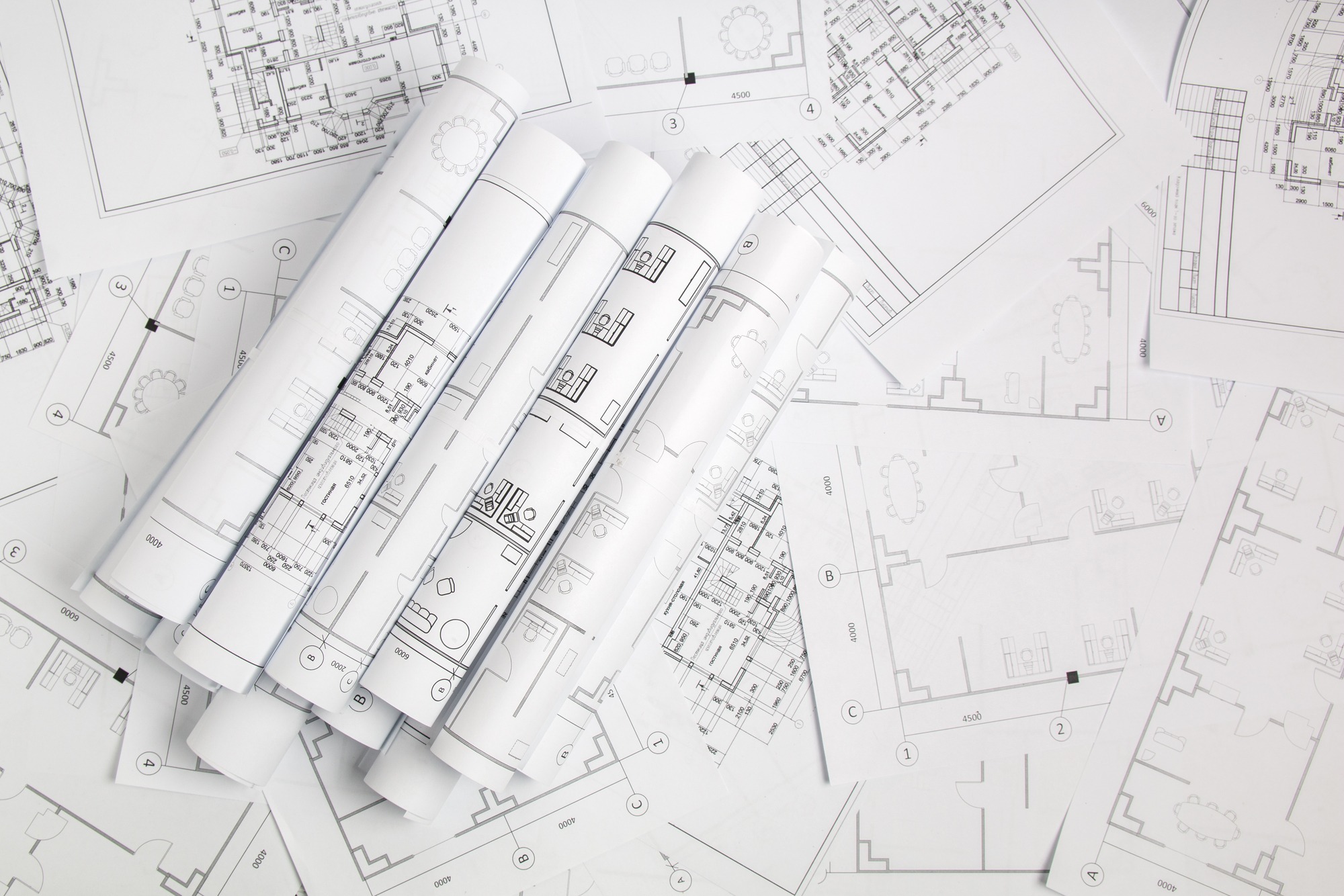Architectural Services in San Diego County, CA
At DSA, we understand that creating the perfect space, whether residential, commercial, or institutional, requires a deep understanding of our client’s vision and the environment surrounding it. From initial vision to your big moving-in day, our services cover every phase of architectural development meticulously aligned with standard Architect/Client agreements.

ARCHITECTURAL SERVICES
At DSA, we understand that creating the perfect space, whether residential, commercial, or institutional, requires a deep understanding of our client’s vision and the environment surrounding it. From initial vision to your big moving-in day, our services cover every phase of architectural development meticulously aligned with standard Architect/Client agreements.

Complete remodel of 1970’s house on Cordero Street, Del Mar.
Pre-Design
The blueprint of any successful project begins in the Pre-Design phase. Here, we dive deep into the client’s objectives, budget considerations, and design challenges. Our team interviews the client extensively to understand their aspirations and requirements, allowing us to assess the feasibility of the project thoroughly.
During this initial phase, we meticulously document the site’s existing conditions. This includes photographing, measuring, and creating digital sketches of existing structures to establish accurate “As-Built” drawings. These form the foundation of all future design adjustments and implementations.

Schematic Design
Transforming your ideas into reality begins with our Schematic Design Phase. This stage is characterized by dynamic and creative activity where initial sketches are drawn to define the project’s architectural character:
- Determine an Architectural Character Appropriate for the Project
- Establish General Size and Arrangement of Spaces
- Establish the General Massing of the Building or Addition
- Address Parking and Other Site-Related Elements
- Determine a Conceptual Structural Layout
We also include plans and “before and after” exterior views to clearly delineate modifications and additions, ensuring all stakeholders can visualize the potential outcome.
Reality Check #1
Before concluding this phase, we perform Reality Check #1, where rough cost estimates are generated based on a price/square foot multiplier, and feedback on constructability is solicited from builders, ensuring the project stays aligned with budget expectations.

Design Development
The selected schematic designs undergo rigorous refinement during the Design Development phase. Here, details come to life as we draw interiors, select materials, and finalize the products for use—including windows, flooring, electrical equipment, and plumbing fixtures.
Reality Check #2
In Reality Check #2, we engage with builders for preliminary estimates to ensure cost-effectiveness. This feedback may lead to strategic adjustments before moving forward with the creation of detailed construction documents.
Pre-Design
The blueprint of any successful project begins in the Pre-Design phase. Here, we dive deep into the client’s objectives, budget considerations, and design challenges. Our team interviews the client extensively to understand their aspirations and requirements, allowing us to assess the feasibility of the project thoroughly.
During this initial phase, we meticulously document the site’s existing conditions. This includes photographing, measuring, and creating digital sketches of existing structures to establish accurate “As-Built” drawings. These form the foundation of all future design adjustments and implementations.

House Measurement and Documentation, Muirlands, La Jolla
Schematic Design
Transforming your ideas into reality begins with our Schematic Design Phase. This stage is characterized by dynamic and creative activity where initial sketches are drawn to define the project’s architectural character:
- Determine an Architectural Character Appropriate for the Project
- Establish General Size and Arrangement of Spaces
- Establish the General Massing of the Building or Addition
- Address Parking and Other Site-Related Elements
- Determine a Conceptual Structural Layout
We also include plans and “before and after” exterior views to clearly delineate modifications and additions, ensuring all stakeholders can visualize the potential outcome.
Reality Check #1
Before concluding this phase, we perform Reality Check #1, where rough cost estimates are generated based on a price/square foot multiplier, and feedback on constructability is solicited from builders, ensuring the project stays aligned with budget expectations.

Building Sections, Cordero Street, Del Mar.
Design Development
The selected schematic designs undergo rigorous refinement during the Design Development phase. Here, details come to life as we draw interiors, select materials, and finalize the products for use—including windows, flooring, electrical equipment, and plumbing fixtures.
Reality Check #2
In Reality Check #2, we engage with builders for preliminary estimates to ensure cost-effectiveness. This feedback may lead to strategic adjustments before moving forward with the creation of detailed construction documents.
Pre-Design
The blueprint of any successful project begins in the Pre-Design phase. Here, we dive deep into the client’s objectives, budget considerations, and design challenges. Our team interviews the client extensively to understand their aspirations and requirements, allowing us to assess the feasibility of the project thoroughly.
During this initial phase, we meticulously document the site’s existing conditions. This includes photographing, measuring, and creating digital sketches of existing structures to establish accurate “As-Built” drawings. These form the foundation of all future design adjustments and implementations.

Schematic Design
Transforming your ideas into reality begins with our Schematic Design Phase. This stage is characterized by dynamic and creative activity where initial sketches are drawn to define the project’s architectural character:
- Determine an Architectural Character Appropriate for the Project
- Establish General Size and Arrangement of Spaces
- Establish the General Massing of the Building or Addition
- Address Parking and Other Site-Related Elements
- Determine a Conceptual Structural Layout
We also include plans and “before and after” exterior views to clearly delineate modifications and additions, ensuring all stakeholders can visualize the potential outcome.
Reality Check #1
Before concluding this phase, we perform Reality Check #1, where rough cost estimates are generated based on a price/square foot multiplier, and feedback on constructability is solicited from builders, ensuring the project stays aligned with budget expectations.

Design Development
The selected schematic designs undergo rigorous refinement during the Design Development phase. Here, details come to life as we draw interiors, select materials, and finalize the products for use—including windows, flooring, electrical equipment, and plumbing fixtures.
Reality Check #2
In Reality Check #2, we engage with builders for preliminary estimates to ensure cost-effectiveness. This feedback may lead to strategic adjustments before moving forward with the creation of detailed construction documents.
Construction Documents
Our construction documents, which range from least to most detailed based on the project’s needs, are meticulously crafted instructions for building the envisioned project with varying objectives in mind.
These different objectives require that they include different degrees of detail and information:
- The Permit Set: For city review, ensuring compliance with local codes, zoning regulations, and other laws.
- The Bid Set: This is more detailed and is provided to potential builders for accurate project bidding. The Bid Set is occasionally developed while the City reviews the Permit Set.
- The Contract Set: Finalized documents containing adjustments to the Bid Set and serving as part of the legal contract with the selected builder.
Permitting
Before construction commences, permits must be secured from numerous governing entities. Within municipal boundaries, the local Building Department—frequently referred to as Development Services—typically spearheads the permit process. The permit review process may be outsourced to third-party firms in smaller municipalities or jurisdictions outside the city perimeter.
The responsibility of collating and forwarding all requisite drawings, specifications, and supplementary data to the City and other relevant agencies typically falls upon the architect. Following the completion of their review, the architect addresses any inquiries or feedback, amends documents as necessary, and seeks to resolve any disputed issues.
Naturally, the submission of plans is accompanied by permitting fees, the calculation of which usually correlates with the project’s scale. Any outstanding balance or refunds are commonly settled upon project endorsement and permit issuance.

Bidding
Contractors display heightened interest in projects as the Permit Set reaches readiness for submission or post-permit approval. It is advantageous to incorporate as much detail as possible into the drawings prior to their release for bidding, surpassing even the Building Department’s stipulations. (Refer to the Construction Documents section for additional insights.
Enhancements, including materials, finishes, products, and equipment specifics, can significantly influence project costing. With the Bid Set prepared, the architect aids the owner in screening contractors and oversees the bid solicitation process. This involves setting bidding guidelines, fielding queries from contractors, and ensuring a level playing field by uniformly disseminating information to all bidders.
After the bid is submitted, the architect typically facilitates bid evaluation, assisting the owner in selecting the most suitable contractor for the project.
Construction Administration
Construction administration serves to ensure project fidelity to the architect’s designs and keeps the project trajectory on course.
This function is executed through regular architectural site inspections. These visits provide the contractor and architect a platform to address emergent issues. As necessary, the architect might supply additional research or design blueprints, document the visit with photographs, and compile detailed site reports for the owner.
Other responsibilities during this phase include reviewing shop drawings, drafting and managing punch lists, coordinating consultant efforts, and evaluating product specifications, all of which are vital to successfully administrating the construction process.


